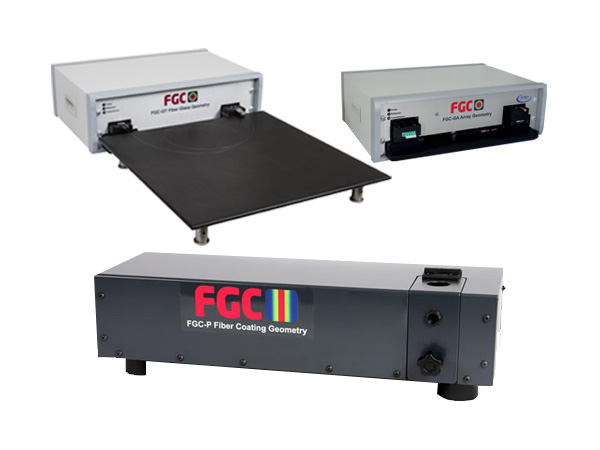Optical Fibre Diameter Analyser Devices for Lab and Field Use
Optical Fibre Diameter Analyser Devices for Lab and Field Use
Blog Article
Enhance Your Fiber Optic Projects With a Reliable Size Analyser
The integration of an effective diameter analyser right into fibre optic jobs functions as a critical element in accomplishing accuracy and uniformity. By promoting accurate size measurements, these analysers not only improve the high quality of installments yet also minimize possible compatibility problems among elements. The advanced abilities of modern-day analysers simplify data collection and quality control procedures. As we explore the vital functions and benefits of these tools, it becomes apparent just how they can change job results and guarantee adherence to industry criteria. What stays to be discussed is just how to properly carry out these analysers in your existing process.
Relevance of Size Measurement
Measuring the diameter of fibre optic cables is a crucial task that makes sure ideal efficiency and dependability in interaction systems. Exact size measurement is crucial for numerous factors, mostly for keeping signal integrity and lessening loss. A cord's diameter directly affects its capacity to send light effectively; deviations from the specified diameter can cause enhanced attenuation, which affects the total performance of the network.
In addition, specific dimension is essential during the installation and upkeep of fiber optic systems. An incorrect fit between connectors and cable televisions can cause signal deterioration or complete failing of communication links. By guaranteeing that diameters are within defined tolerances, professionals can enhance compatibility in between elements, resulting in enhanced system reliability.
Furthermore, size measurement plays a considerable role in quality control during manufacturing. Uniformity in the diameter of fibre optic cable televisions is essential for making sure uniform efficiency throughout different sets. optical fibre diameter analyser. This uniformity assists manufacturers preserve industry requirements and cultivates confidence amongst end-users
Functions of an Effective Analyser
An effective analyser for fiber optic tasks should integrate numerous essential functions that boost accuracy and functionality in size dimension. High-resolution optical sensors are necessary for exact size analyses, making it possible for users to identify also the least variants in fiber thickness. These sensing units must be enhanced by innovative calibration systems, making certain regular performance across different problems and products.
Second of all, an easy to use user interface is essential for assisting in simplicity of procedure. This consists of intuitive software that permits for seamless data input and output, in addition to aesthetic depictions of the dimensions taken. A portable design boosts use in various field atmospheres, making it much easier to conduct assessments on-site.
Furthermore, the analyser ought to support several measurement settings, accommodating different fibre kinds and applications. The capability to store and recover historical information is an additional important attribute, allowing customers to track performance gradually and make notified decisions.
Advantages for Fibre Optic Projects
Executing a size analyser in fibre optic tasks provides considerable advantages that significantly improve job efficiency and high quality. Among the key advantages is the capacity to guarantee go right here specific measurements of fiber size, which is critical for keeping ideal performance in fibre optic systems. Exact diameter analyses help in the identification of disparities that can lead to signify deterioration or loss, therefore ensuring high-quality transmission.
Furthermore, making use of a diameter analyser streamlines the quality assurance procedure. By automating measurement jobs, task teams can decrease the time invested in hand-operated assessments, causing faster project completion and lowered labour costs. This efficiency additionally enables more rigorous testing protocols, resulting in improved item reliability.
Furthermore, consistency in fiber size dimensions advertises compatibility with other fibre optic parts, Recommended Site reducing the risk of installation mistakes and improving overall system efficiency. The unification of a diameter analyser not just aids in keeping sector standards however likewise fosters confidence in project deliverables.
Combination Into Existing Process
Integrating a diameter analyser into existing workflows can significantly enhance the functional efficiency of fiber optic projects. By flawlessly incorporating this technology, groups can achieve specific measurements that are essential to keeping the stability and performance of fiber optic systems. This assimilation enables real-time information collection and analysis, which can be crucial during the production and setup phases.
Additionally, the capacity to automate size dimension procedures decreases the potential for human error, guaranteeing regular top quality control throughout the job lifecycle. The data created can be easily shared throughout systems, assisting in cooperation among engineers, service technicians, and project managers. This accessibility boosts decision-making and accelerates task timelines.

Selecting the Right Diameter Analyser
When picking a size analyser for fiber optic Learn More jobs, it is important to think about several key variables that directly influence measurement precision and functional efficiency. First, the resolution and accuracy of the analyser need to line up with the details needs of your job. Higher resolution instruments can detect minute variants in diameter, which is essential for ensuring ideal efficiency in fiber optic systems.
Following, analyze the rate of measurement. For tasks with limited deadlines, a diameter analyser that uses rapid information purchase can considerably enhance efficiency. In addition, consider the analyser's compatibility with existing systems and software application. A smooth assimilation reduces configuration time and minimizes disruptions during procedures.
One more vital element is the array of sizes the analyser can accommodate. By carefully examining these elements, you can select a size analyser that improves the efficiency and precision of your fibre optic jobs.
Conclusion
In conclusion, the assimilation of an effective diameter analyser is critical for boosting fibre optic tasks. Exact diameter dimensions guarantee optimum efficiency and reliability while minimizing installment errors. Advanced features help with real-time information collection and conformity with market standards, inevitably boosting the high quality of deliverables. By prioritizing the choice and implementation of a proper analyser, project performance is substantially improved, leading the way for effective end results in fibre optic applications.
A cable's diameter directly affects its capacity to send light effectively; variances from the defined size can lead to increased attenuation, which impacts the general efficiency of the network.

Report this page